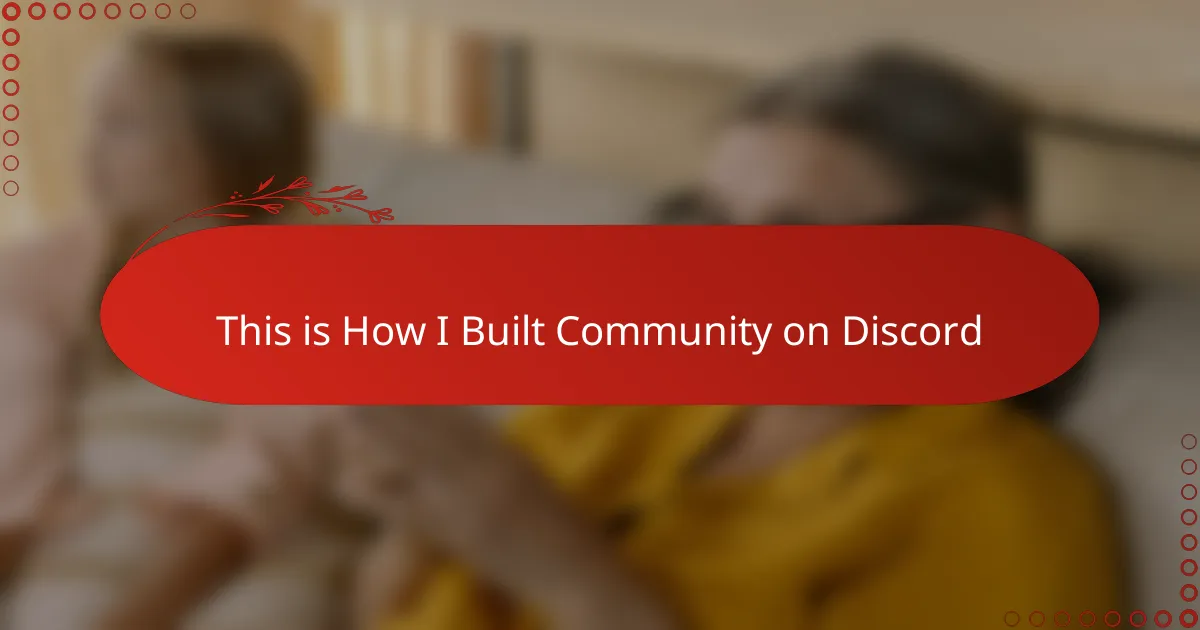Key takeaways
- Discord communities enhance interaction between broadcasters and listeners, fostering organic engagement and loyalty.
- Organizing channels by specific interests and roles encourages participation and creates a sense of belonging among members.
- Utilizing interactive features, such as polls and event-specific announcements, boosts audience involvement and excitement.
- Maintaining a positive community requires active moderation, clear guidelines, and empowering members to help uphold community standards.
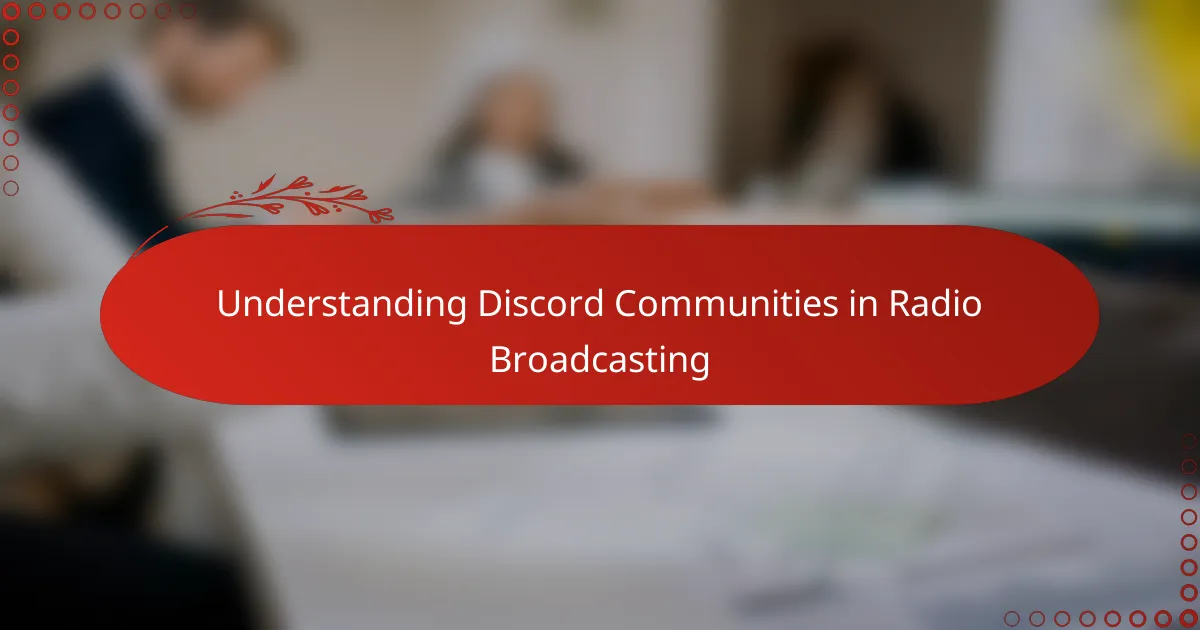
Understanding Discord Communities in Radio Broadcasting
When I first explored Discord for radio broadcasting, I realized it’s more than just a chat app—it’s a vibrant community hub. These spaces allow broadcasters and listeners to connect in real time, sharing feedback, ideas, and even spontaneous discussions that feel closer than traditional call-ins. Have you ever experienced that moment when a listener’s comment sparks a fresh segment idea on the spot? That’s the power of Discord communities in this field.
What struck me most was how Discord breaks down the barriers between creators and audience. In radio, the connection often feels one-way, but with Discord, it’s a dynamic exchange. From hosting live listening sessions to sharing exclusive behind-the-scenes content, the community grows organically, fueled by genuine engagement and shared passion for the medium.
Understanding these communities means recognizing their unique role in fostering loyalty and interaction. They become spaces where everyone—from seasoned broadcasters to curious fans—feels heard and valued. Could this be the future of audience engagement in radio broadcasting? Based on my experience, it certainly feels that way.
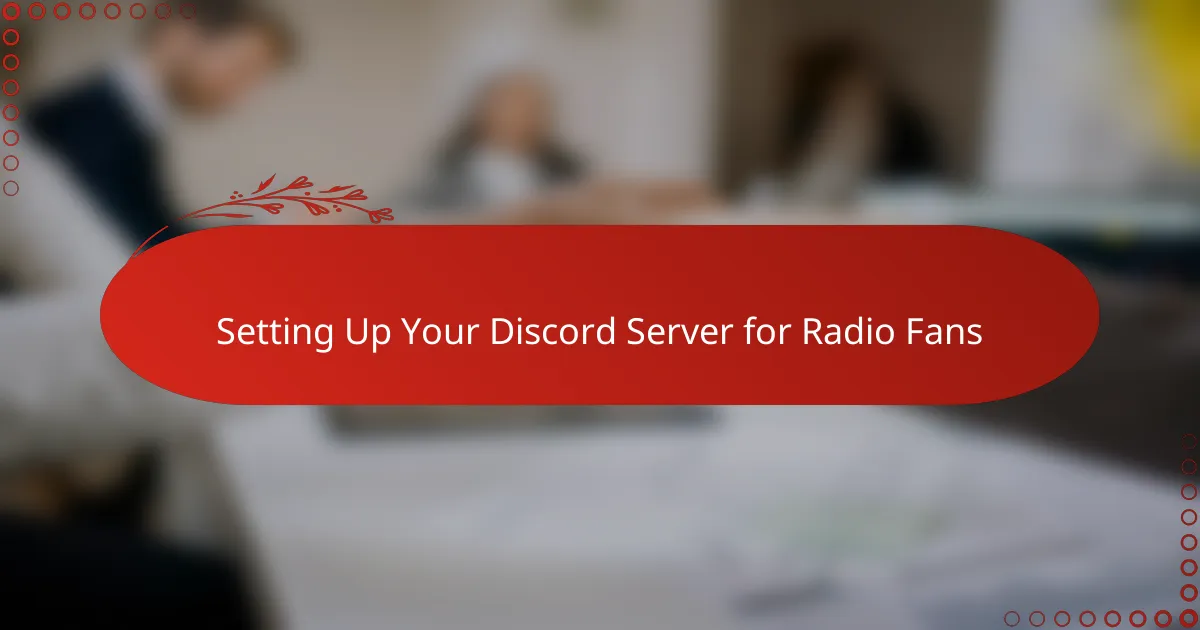
Setting Up Your Discord Server for Radio Fans
When I set up my Discord server for radio fans, the first step was creating clear, intuitive channels tailored to their interests. I made separate spaces for live show discussions, music recommendations, and general radio talk. This organization kept conversations focused and made it easy for newcomers to jump right in without feeling overwhelmed.
Another key move was setting up roles that matched listener involvement—like “Early Supporter” or “Music Curator.” Personally, I noticed this gave people a sense of belonging and motivated them to contribute more actively. Have you ever felt more connected to a community just because you had a unique title or responsibility? That subtle boost makes a bigger difference than I expected.
I also made sure to enable voice channels for live listening parties. Those moments, when fans tune in together and chat live, transform the experience from passive to shared and lively. It’s in those spontaneous exchanges that the real magic of a radio-focused Discord comes alive, turning listeners into passionate community members.
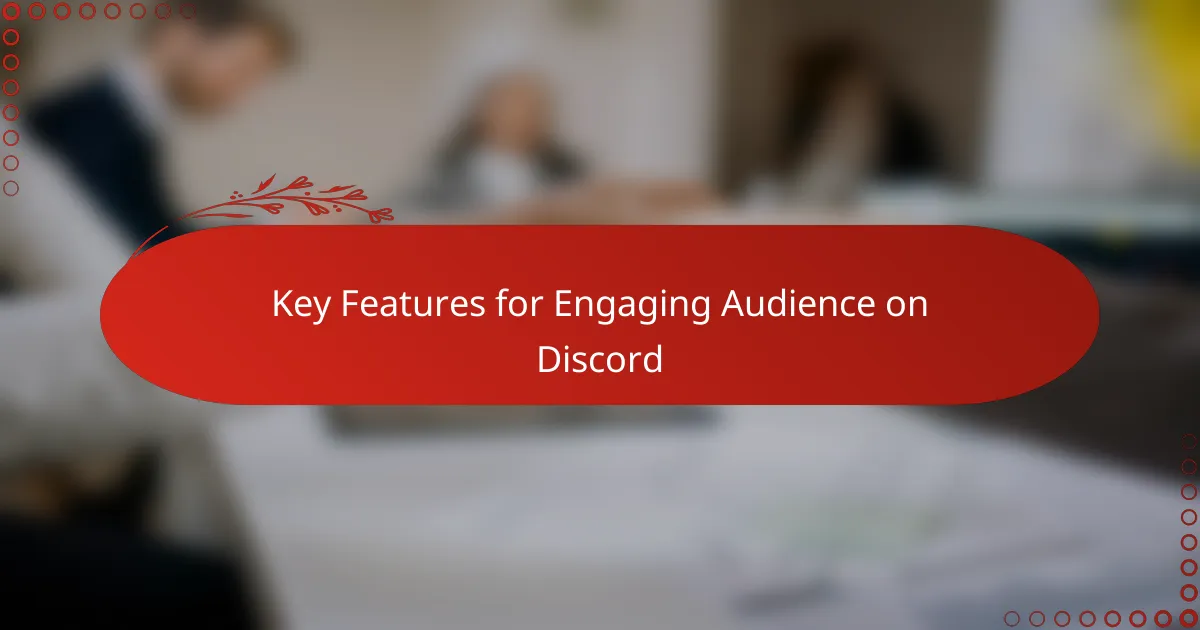
Key Features for Engaging Audience on Discord
One feature that truly sparked engagement on my Discord was the use of interactive bots. These bots can run polls, quizzes, or even play music, which keeps the atmosphere lively and invites listeners to participate beyond just chatting. Have you ever noticed how a simple poll about the next song or topic gets everyone talking? That immediate feedback loop makes the community feel alive and valued.
Another game-changer was creating event-specific channels and reminders. By announcing live shows, Q&A sessions, or exclusive interviews in a dedicated space, I saw a rise in attendance and excitement. People love having a clear place to gather, and knowing when something special is happening encourages them to show up and join the conversation.
Lastly, leveraging voice channels for spontaneous hangouts deeply enriched the connection. There’s something about hearing voices and sharing reactions in real time that text alone can’t capture. Those unplanned moments, like a quick chat after a show, turn casual listeners into close-knit friends, which is the heartbeat of any thriving radio community on Discord.
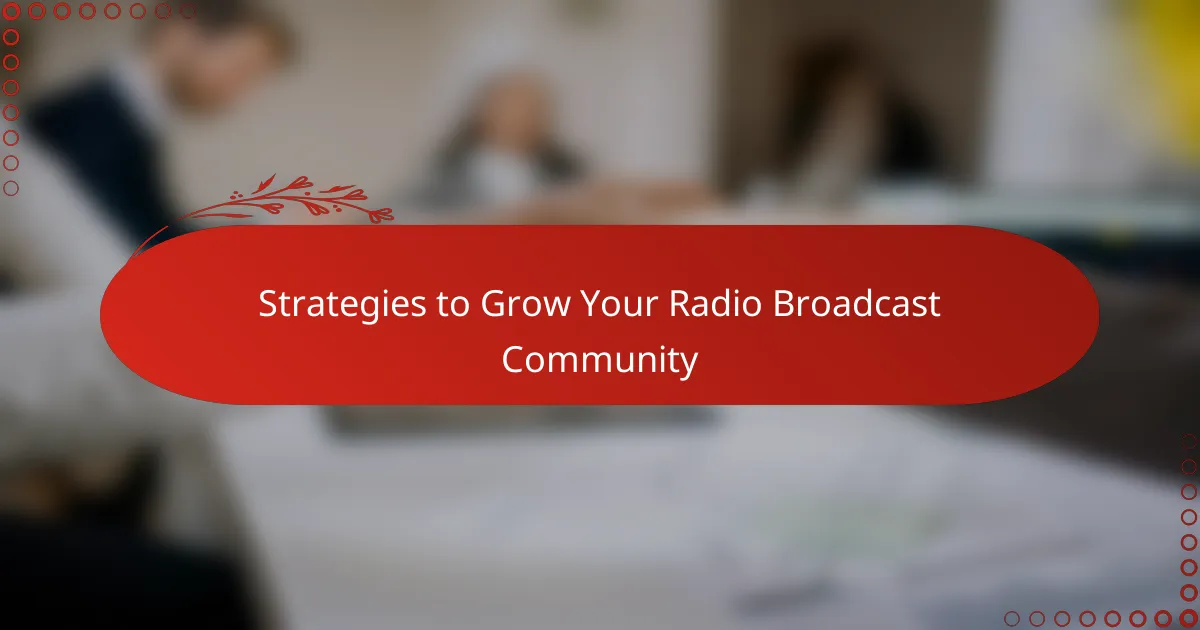
Strategies to Grow Your Radio Broadcast Community
Building a radio broadcast community on Discord really thrives when you prioritize consistent interaction. I found that hosting regular themed chat sessions not only keeps members coming back but also sparks meaningful conversations about shows and music. Have you noticed how predictability in scheduling can make your audience feel more connected and eager to participate?
Another strategy that worked wonders for me was tapping into the power of collaboration. Inviting guest DJs or fellow broadcasters to join live chats created a buzz that attracted new listeners and made the community feel more dynamic. It’s amazing how a fresh perspective can reignite enthusiasm and deepen bonds within the group.
Lastly, rewarding engagement with small perks, like shoutouts or exclusive content, goes a long way. I remember how personally recognizing listeners for their contributions made them light up and encouraged others to join the conversation. Who doesn’t enjoy feeling appreciated? That simple gesture built a positive loop of loyalty and connection.
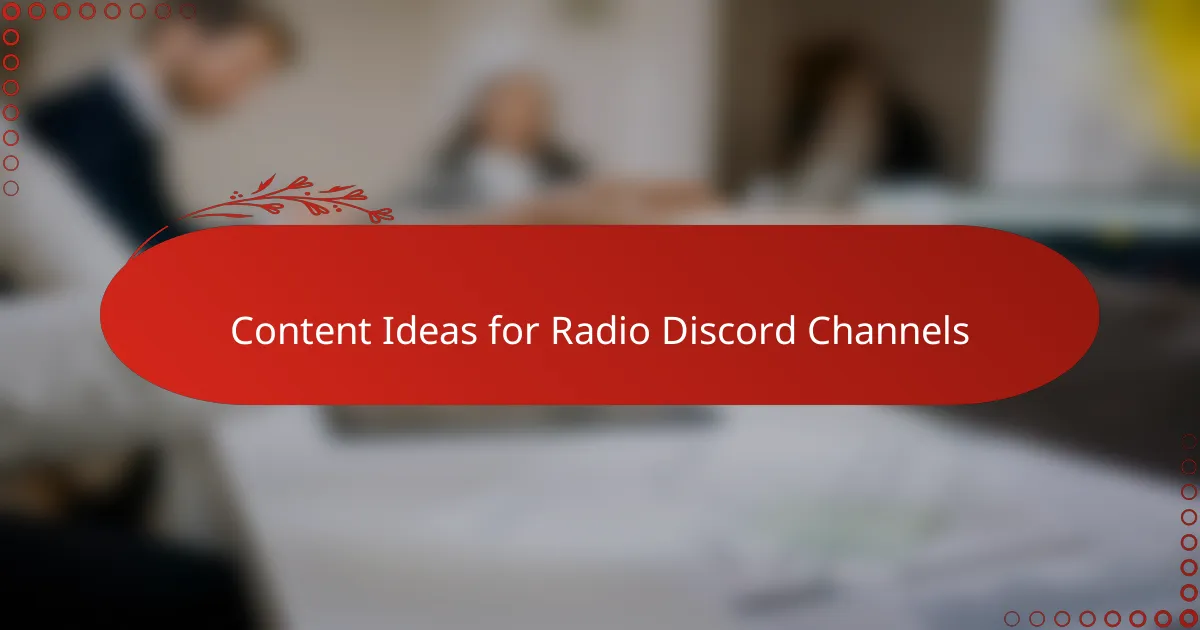
Content Ideas for Radio Discord Channels
One idea I found incredibly effective was creating daily or weekly discussion prompts related to radio shows or music genres. For example, asking members to share their favorite on-air moments or playlists sparks lively conversations and brings out personal stories. Have you ever noticed how a simple question can open up a floodgate of memories and emotions? That’s exactly what happens in these channels.
Sharing behind-the-scenes content, like sneak peeks of upcoming shows or the making of a podcast episode, also keeps the community intrigued. When I posted previews of my recording sessions, people felt like insiders rather than just listeners. This kind of exclusive content turns casual followers into dedicated supporters who eagerly await every update.
Another content idea is hosting themed listening parties or live DJ sets right in the voice channels. I remember how energizing it felt when the chat exploded with real-time reactions during one such event—it was like everyone was tuning in from the same room. These shared experiences create powerful bonds that text channels alone can’t replicate.
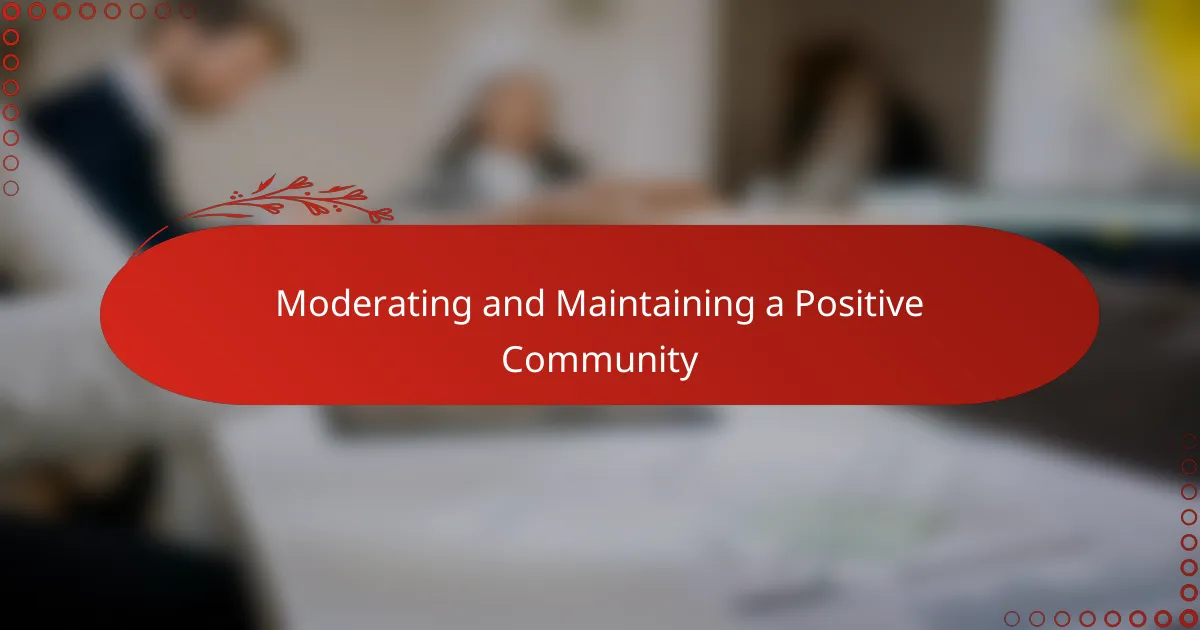
Moderating and Maintaining a Positive Community
Keeping a positive vibe in a Discord community takes more than just setting rules—it requires active, thoughtful moderation. I’ve learned that timely intervention, whether it’s gently steering a heated debate or removing harmful content, makes all the difference. Have you ever noticed how a single negative comment can ripple through the chat? Addressing it quickly helps protect the friendly atmosphere that every member needs to feel welcome.
Consistency is key when maintaining boundaries. In my experience, having clear guidelines pinned right in the channels worked wonders. But it wasn’t just the rules themselves—it was how consistently I and my moderators enforced them that made members trust the space. That trust turns into respect, and respect fuels ongoing positive interactions.
I also found that encouraging members to self-moderate was a game changer. By empowering regulars to politely call out behavior that doesn’t fit our community standards, the responsibility feels shared. It creates a culture where everyone feels invested in keeping the environment supportive and enjoyable—a crucial element when you want your radio fans to stick around and keep the conversations flowing.
